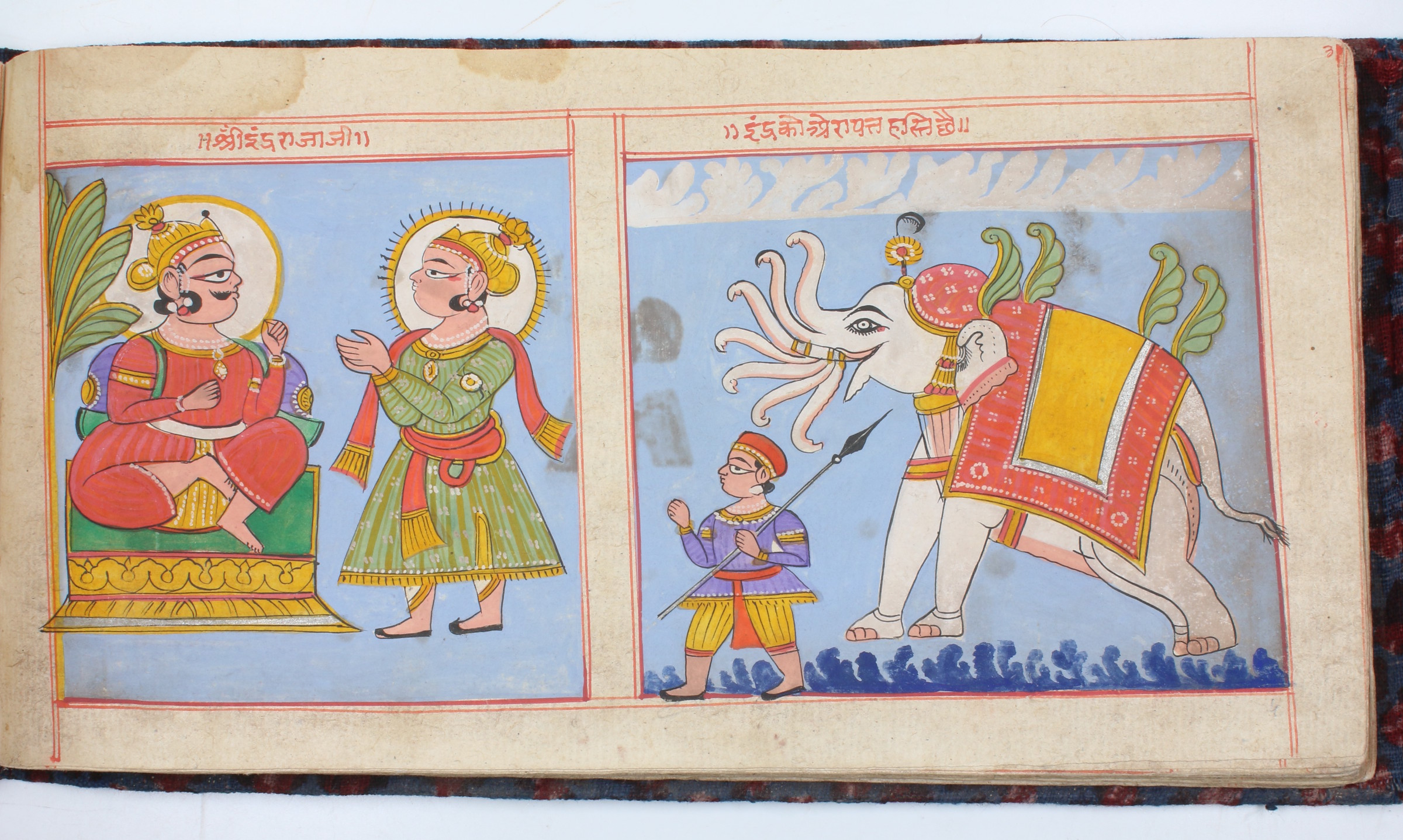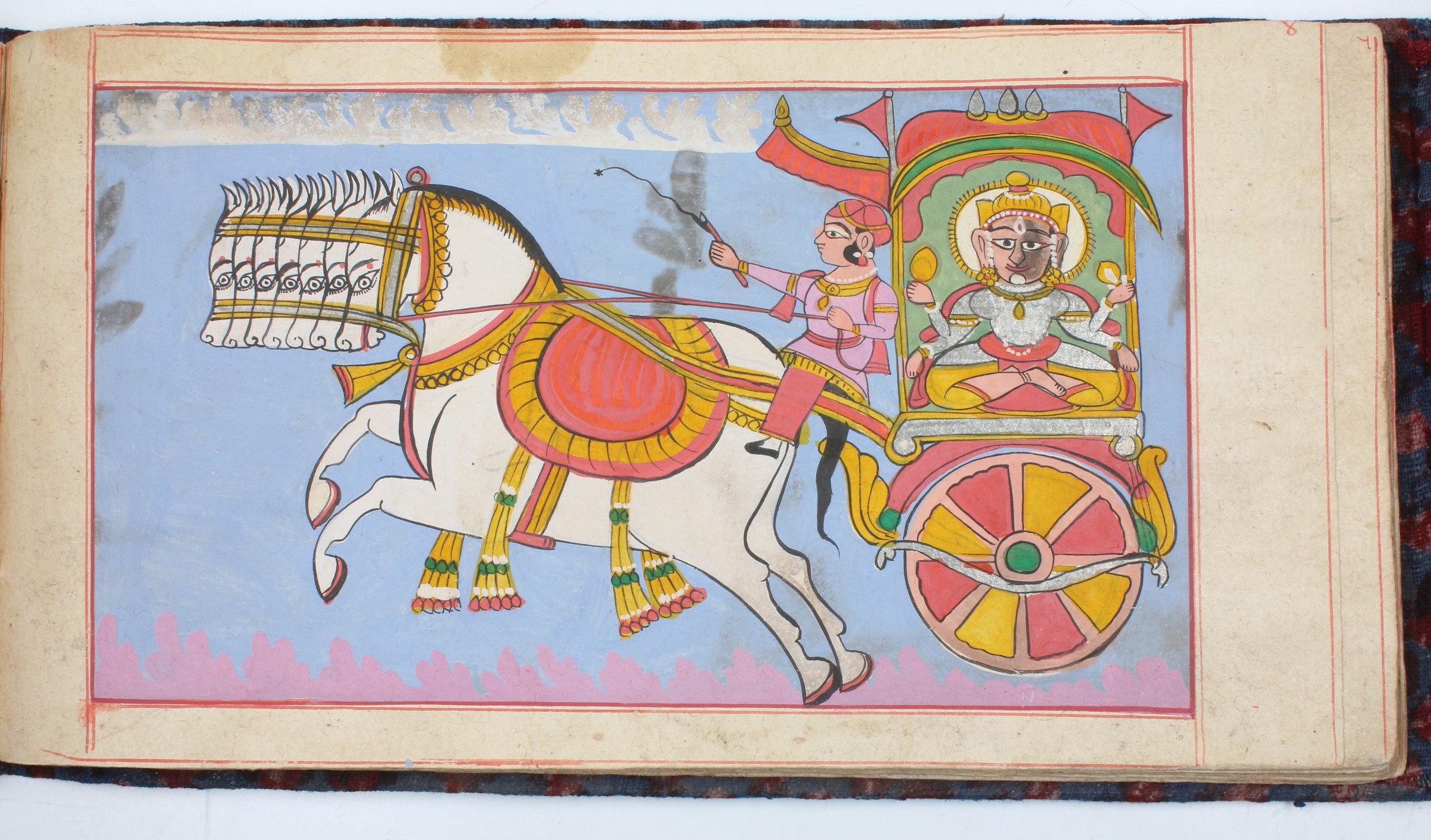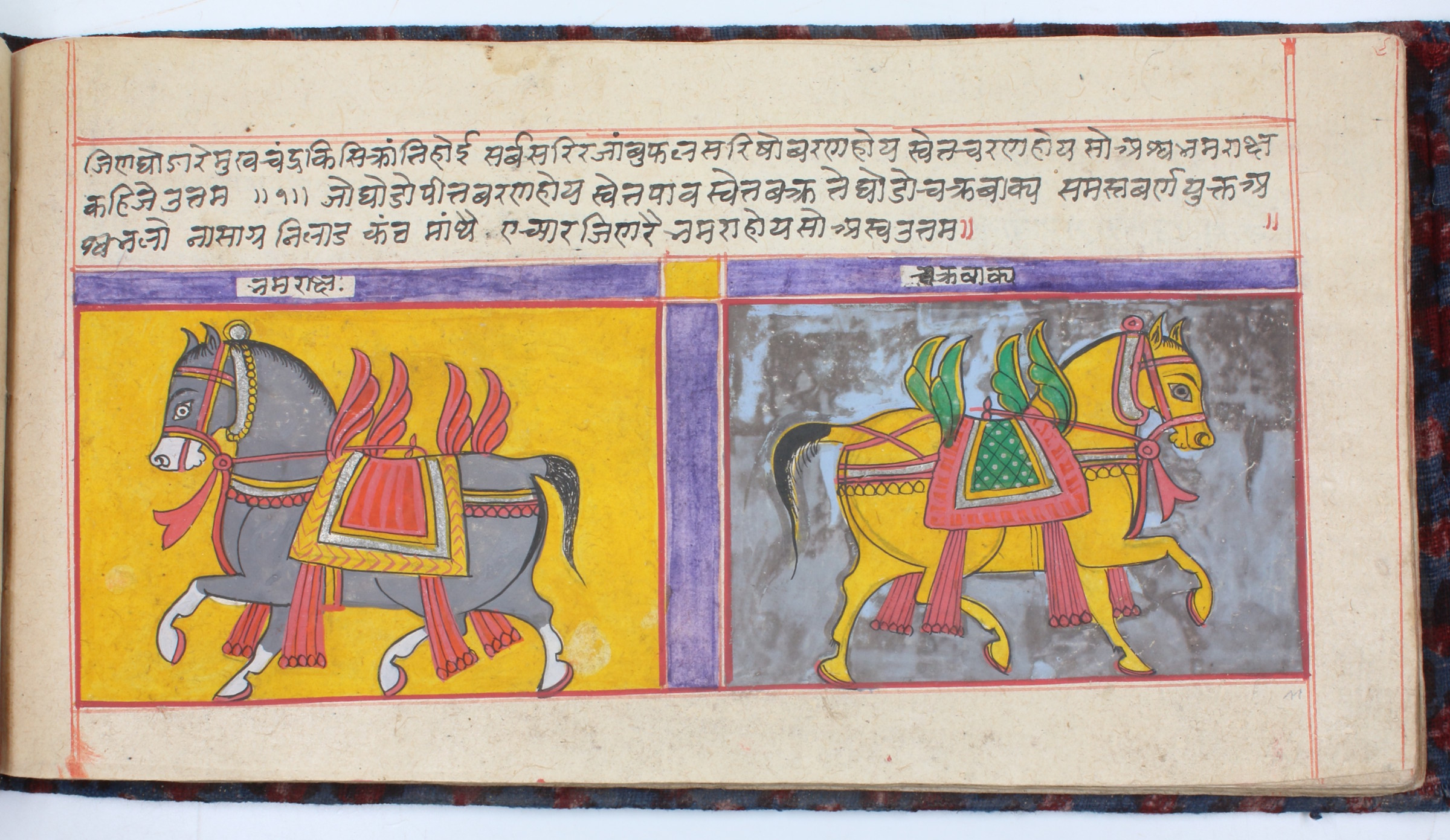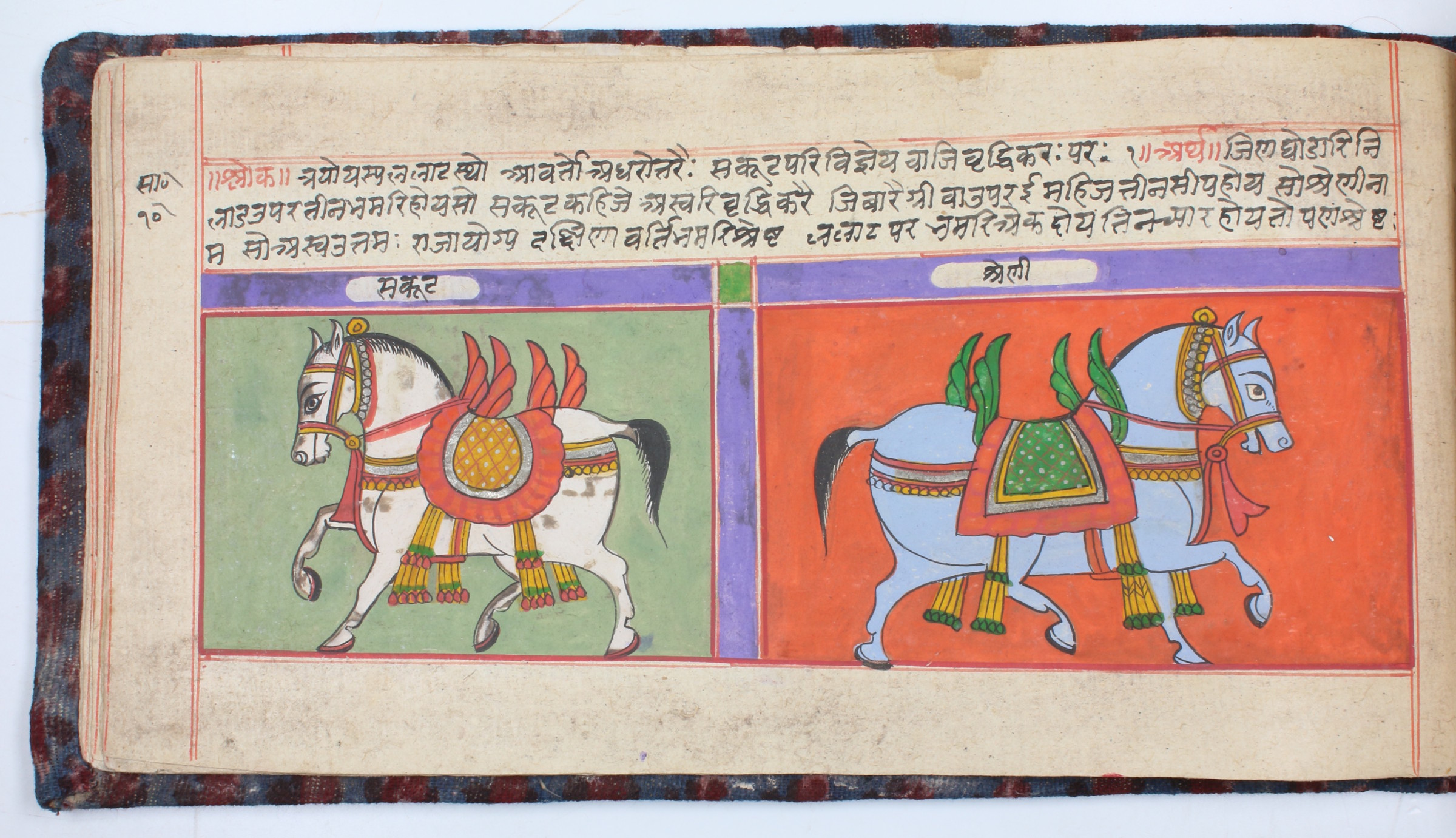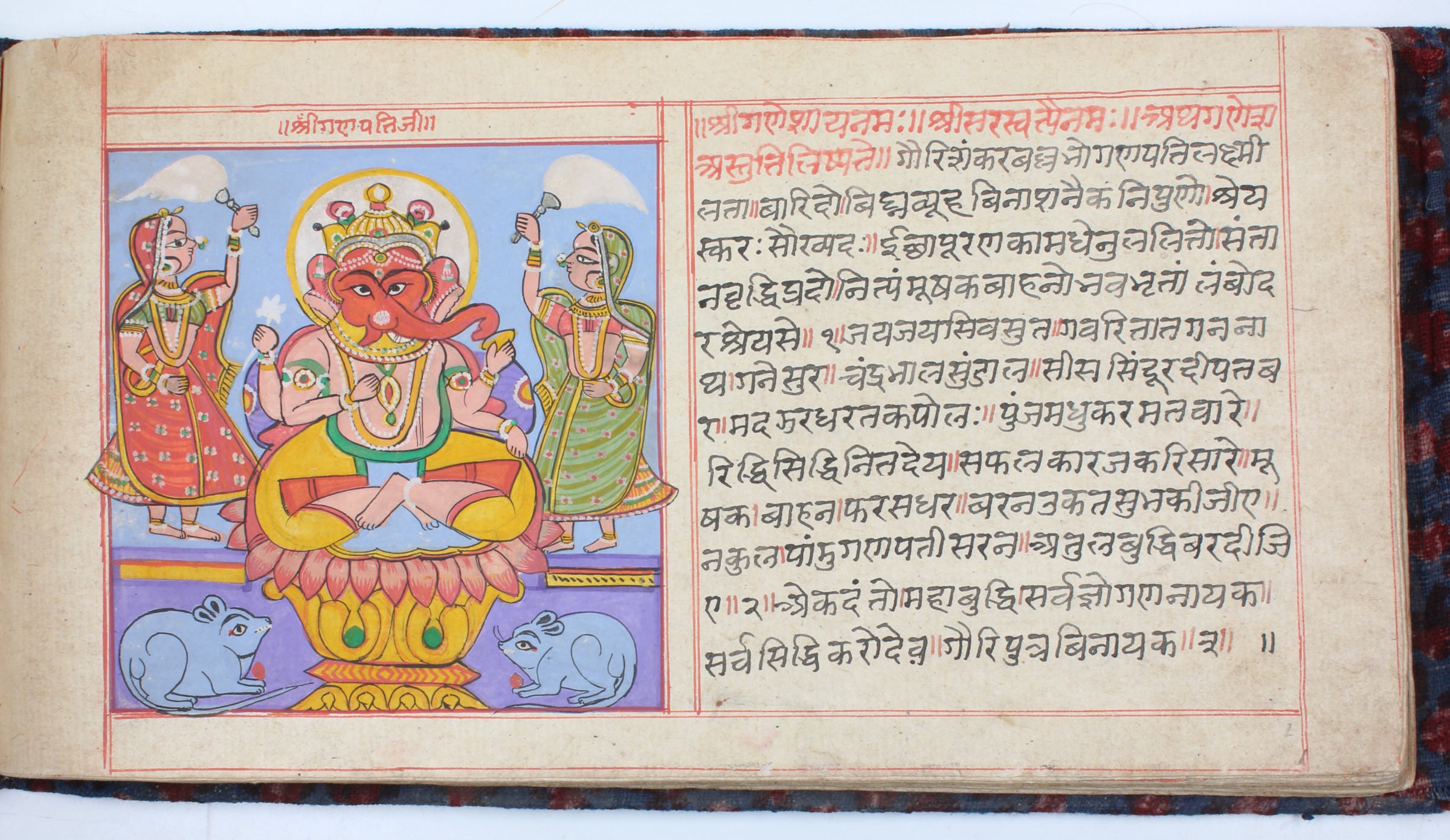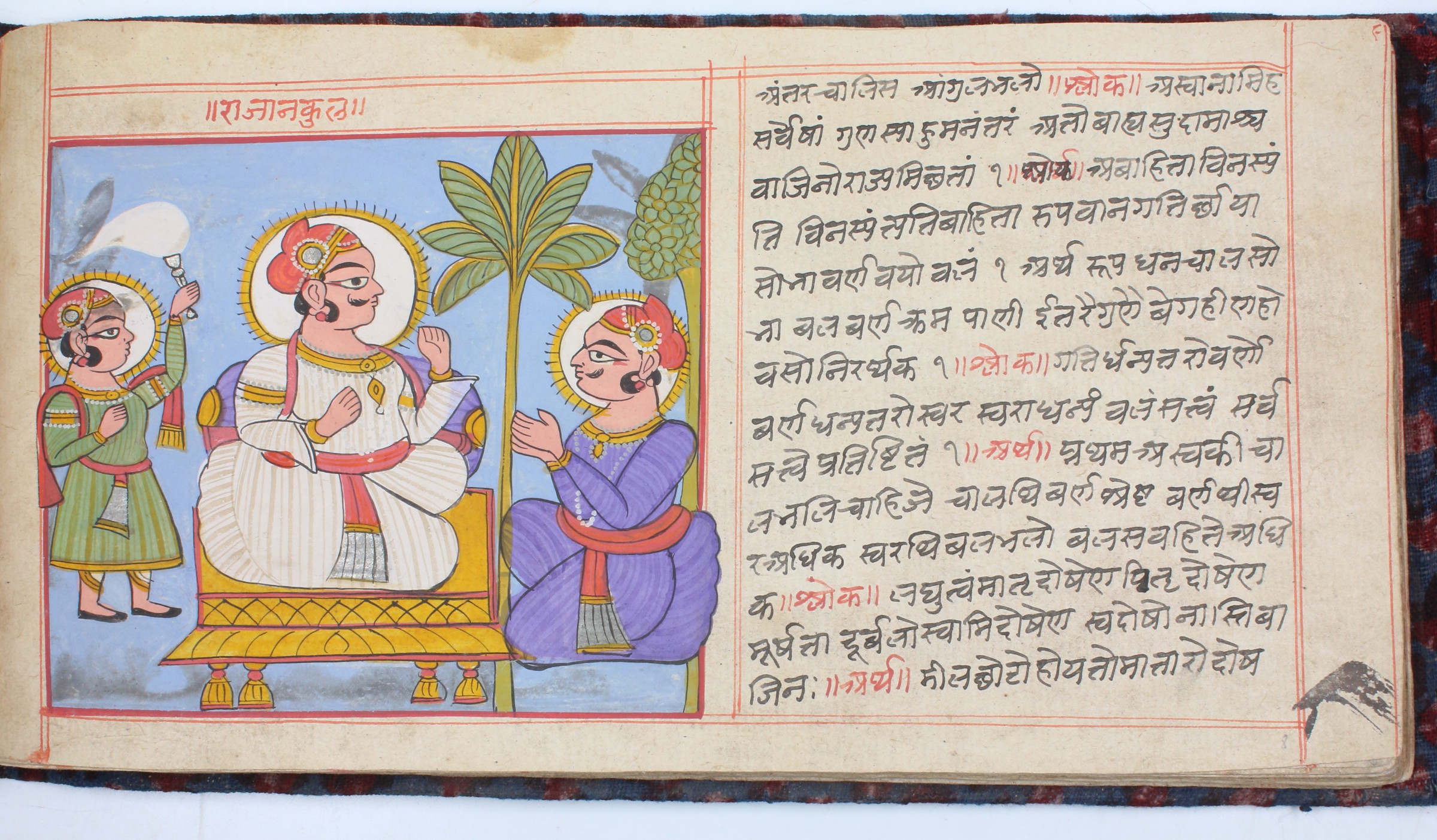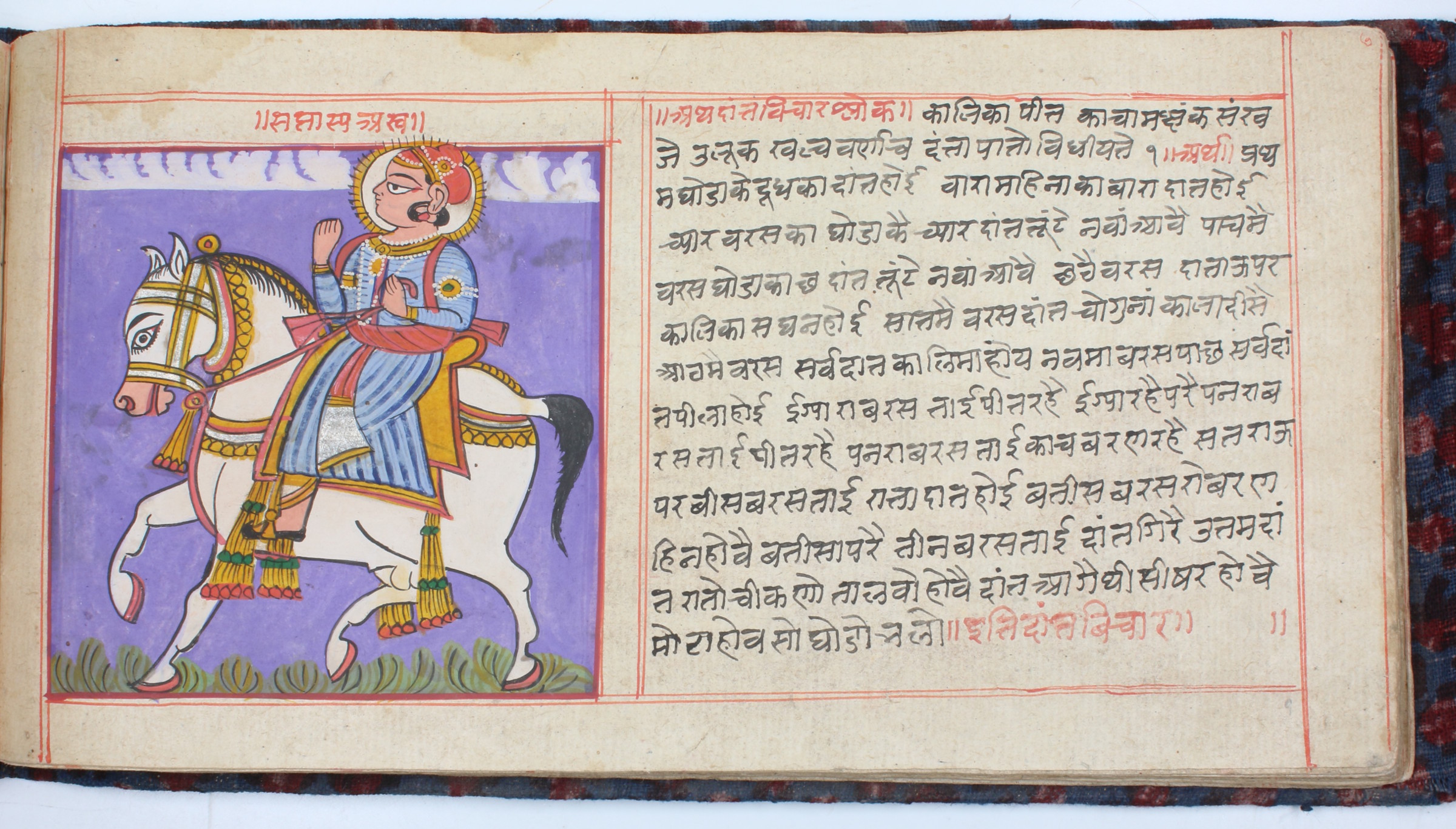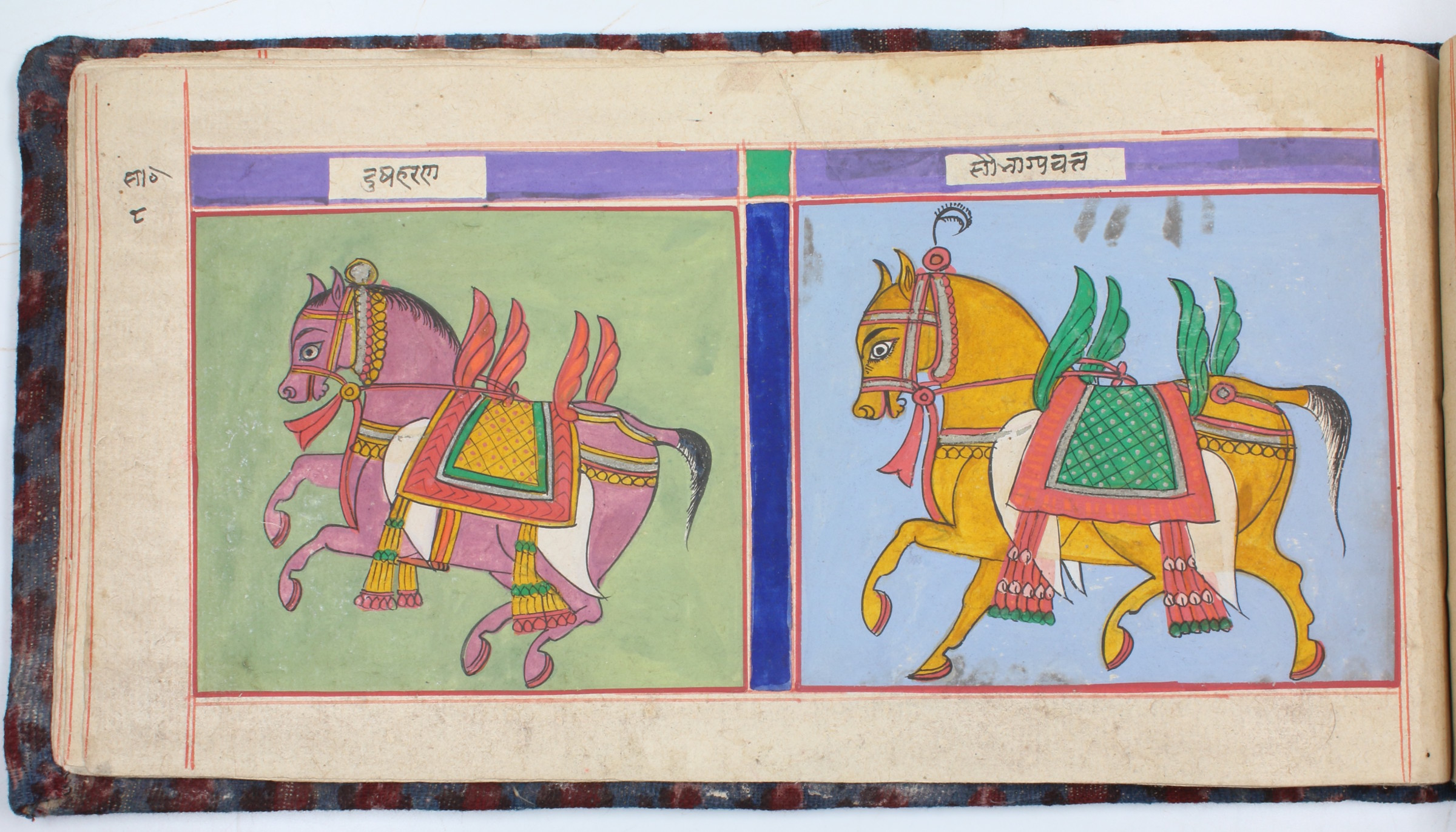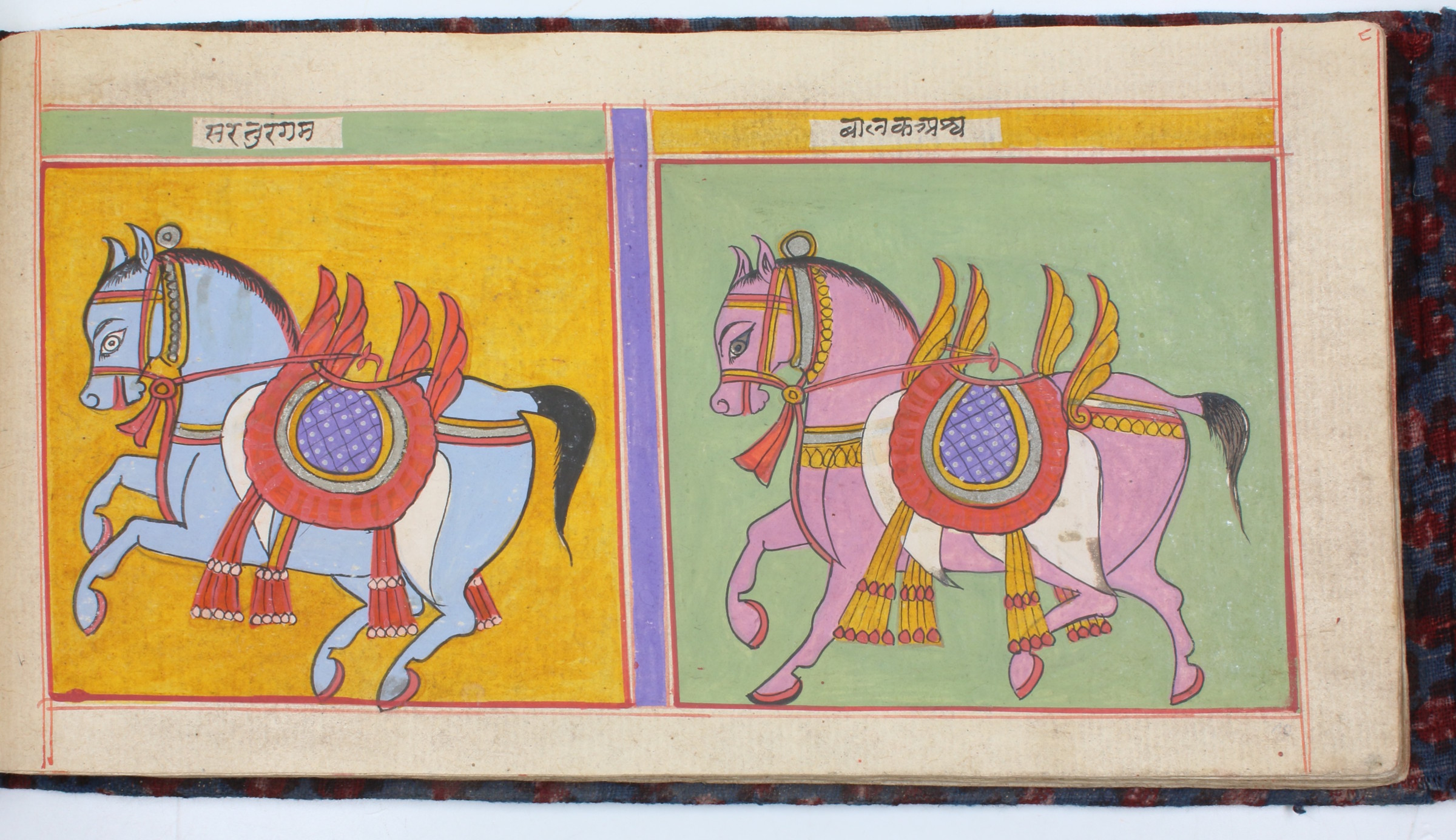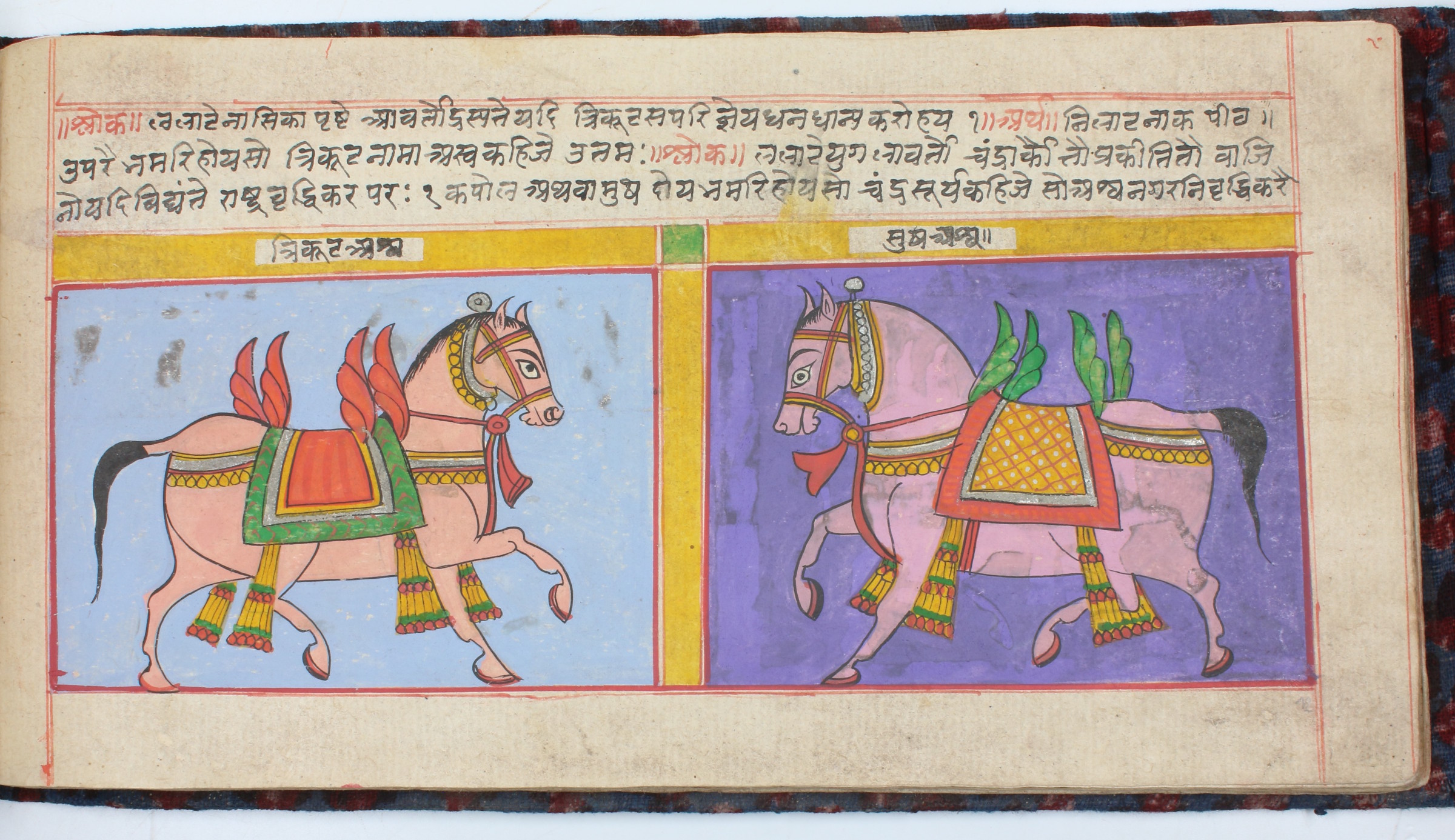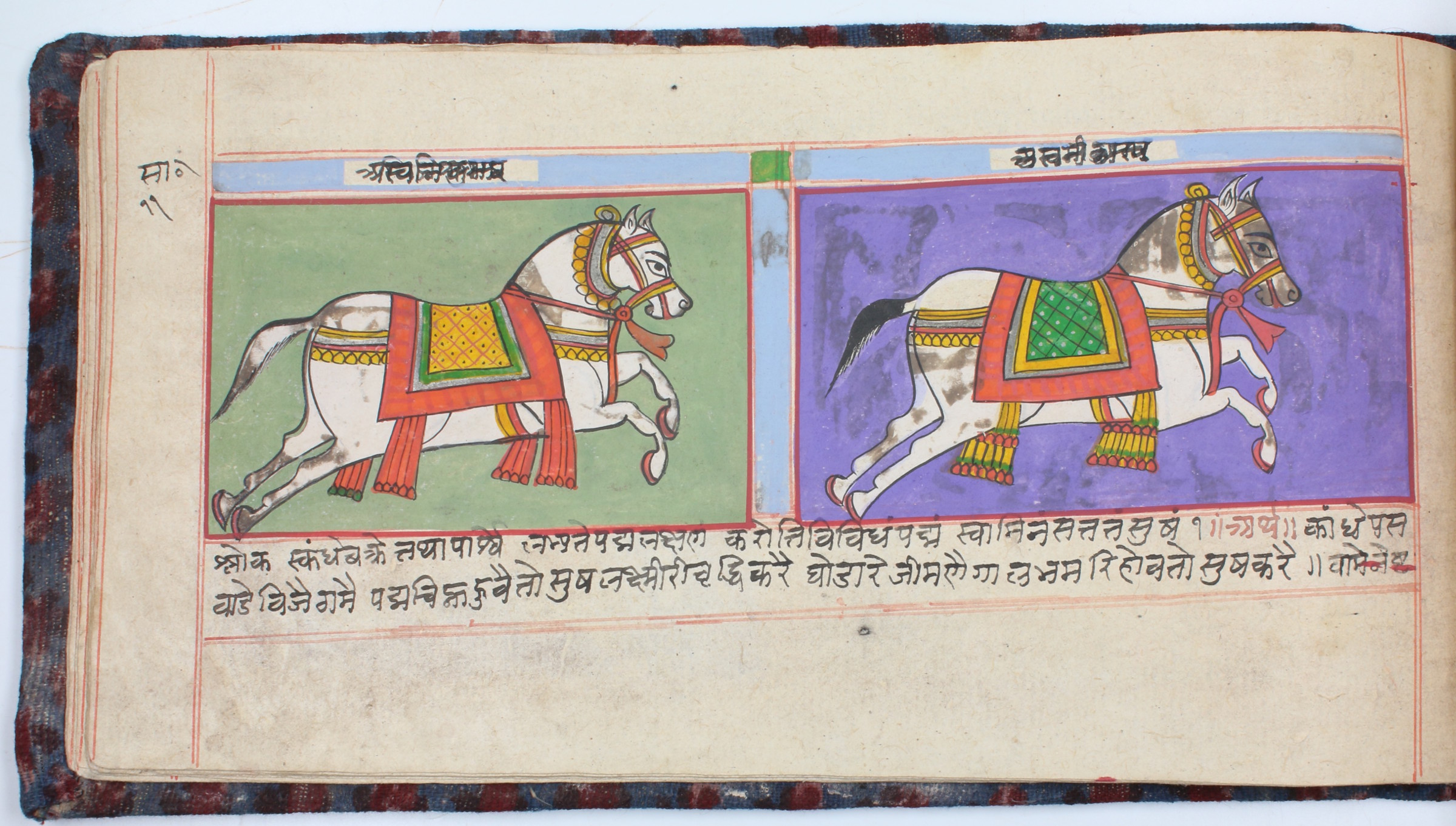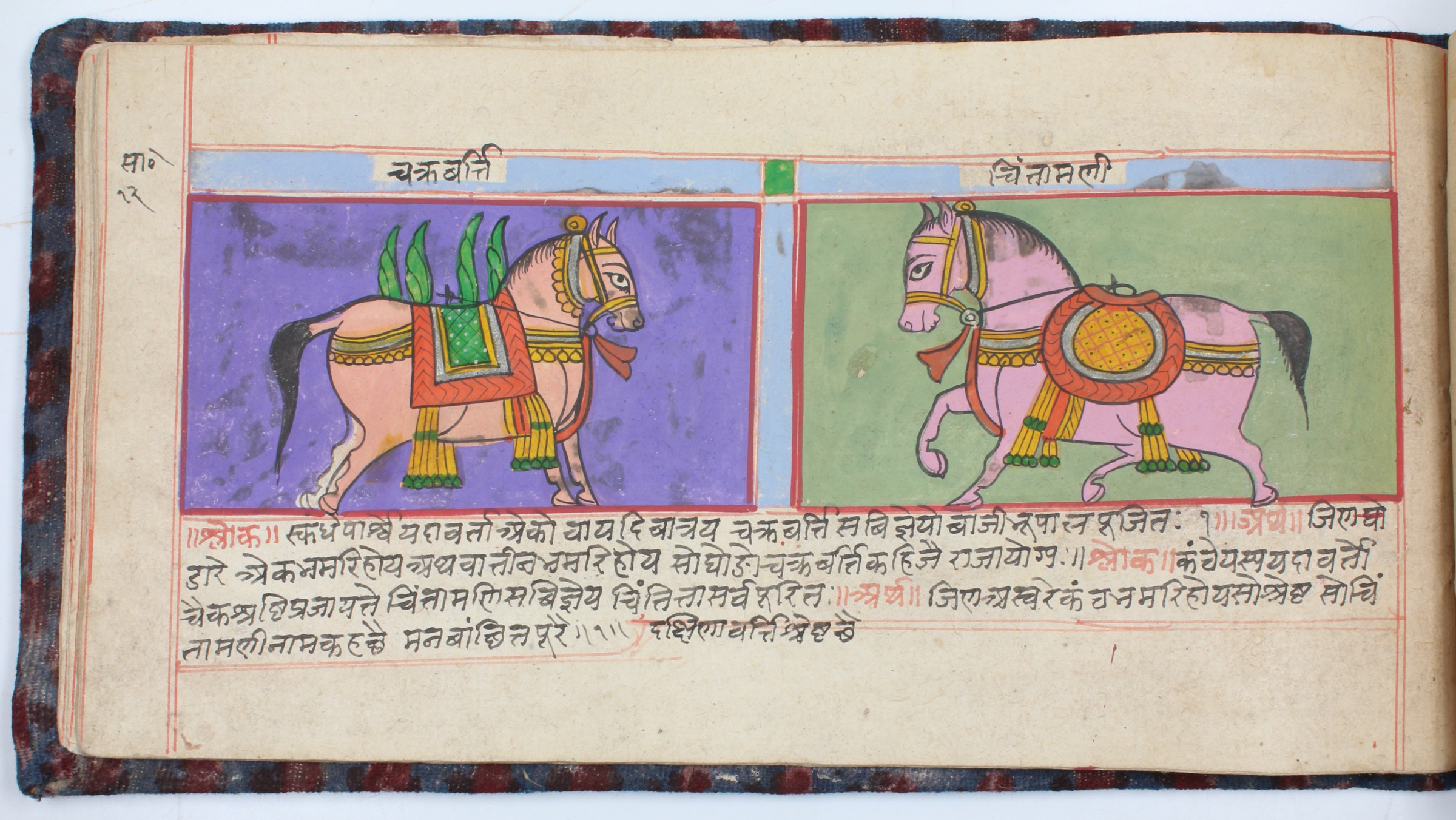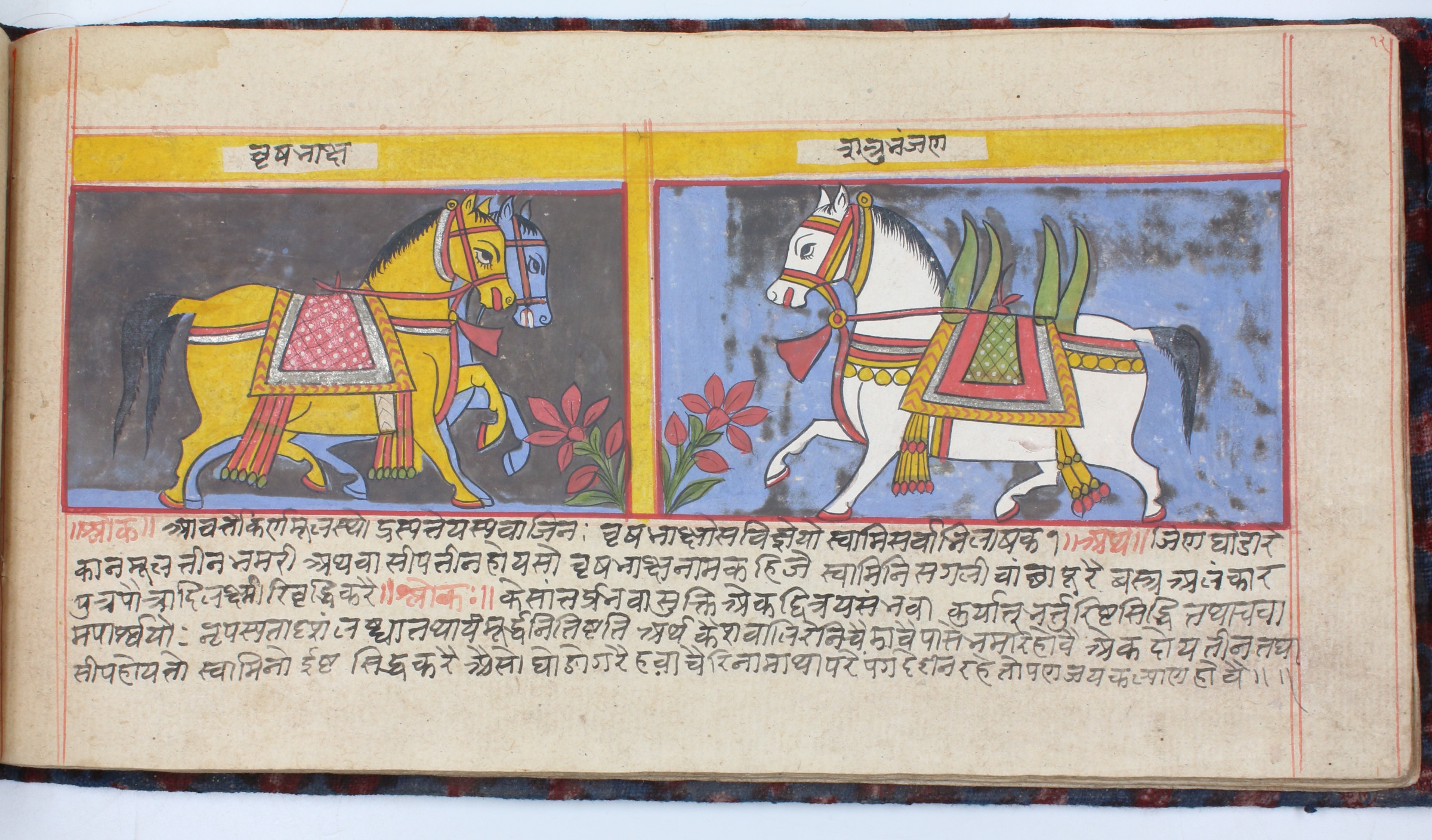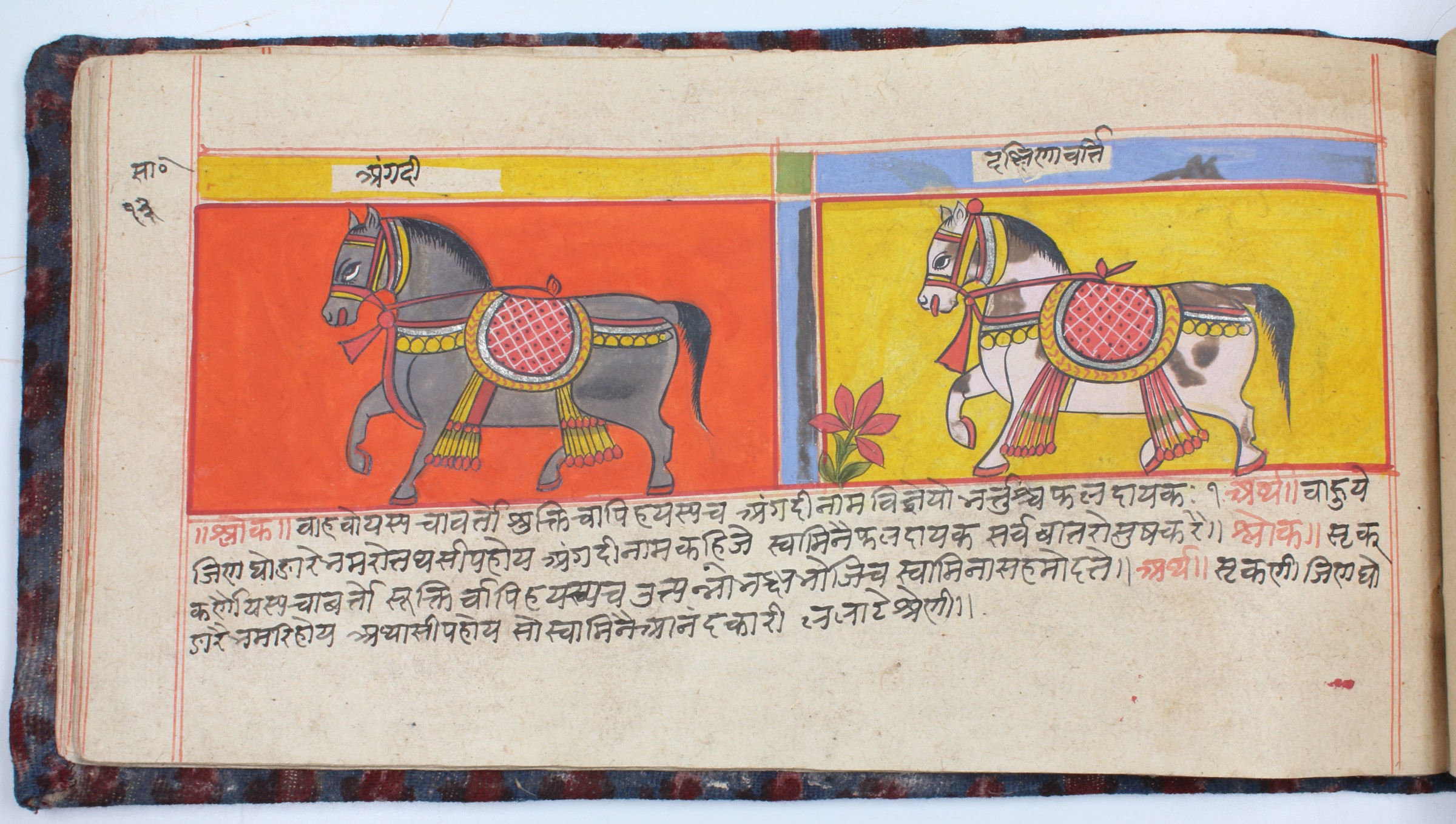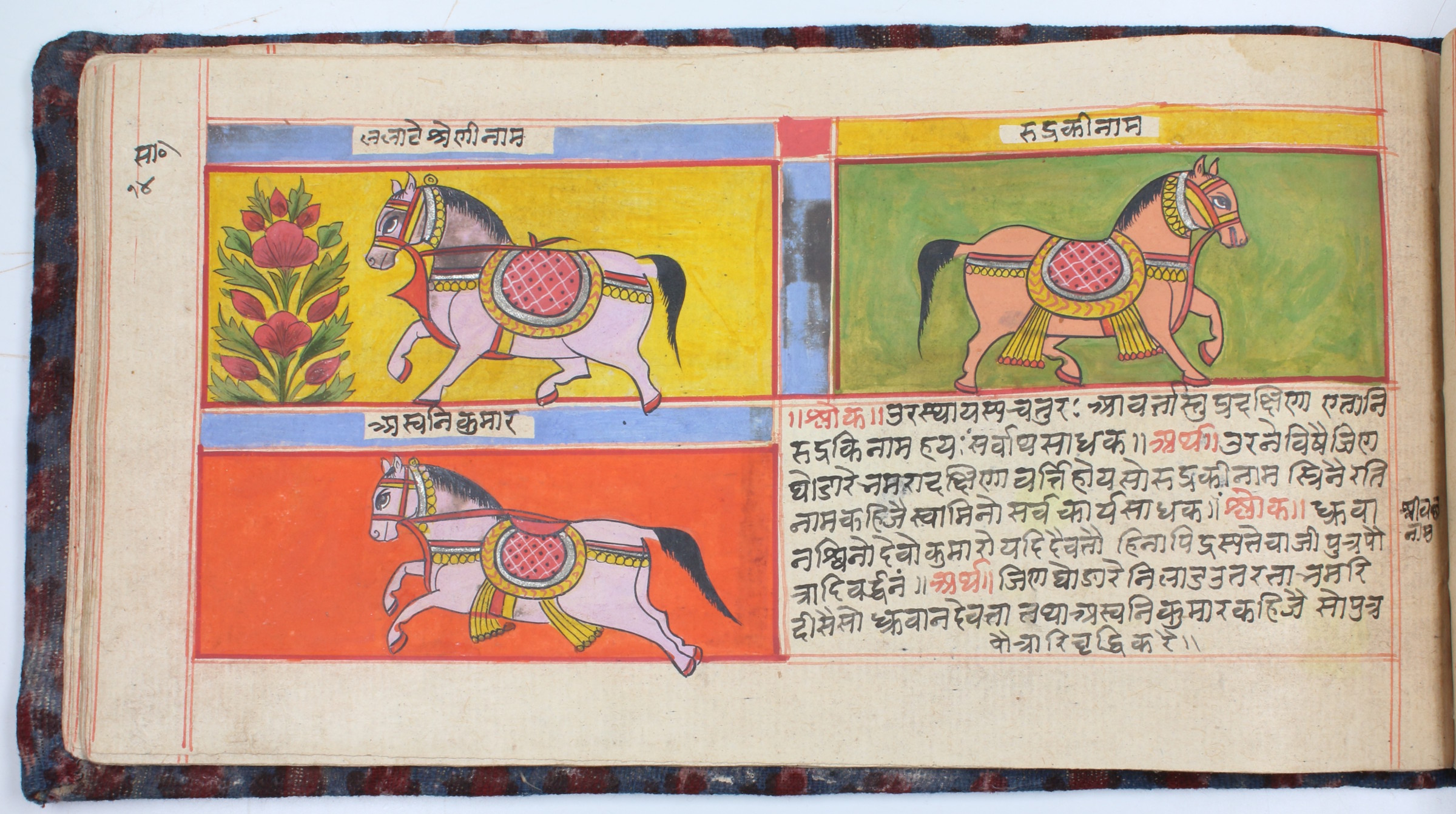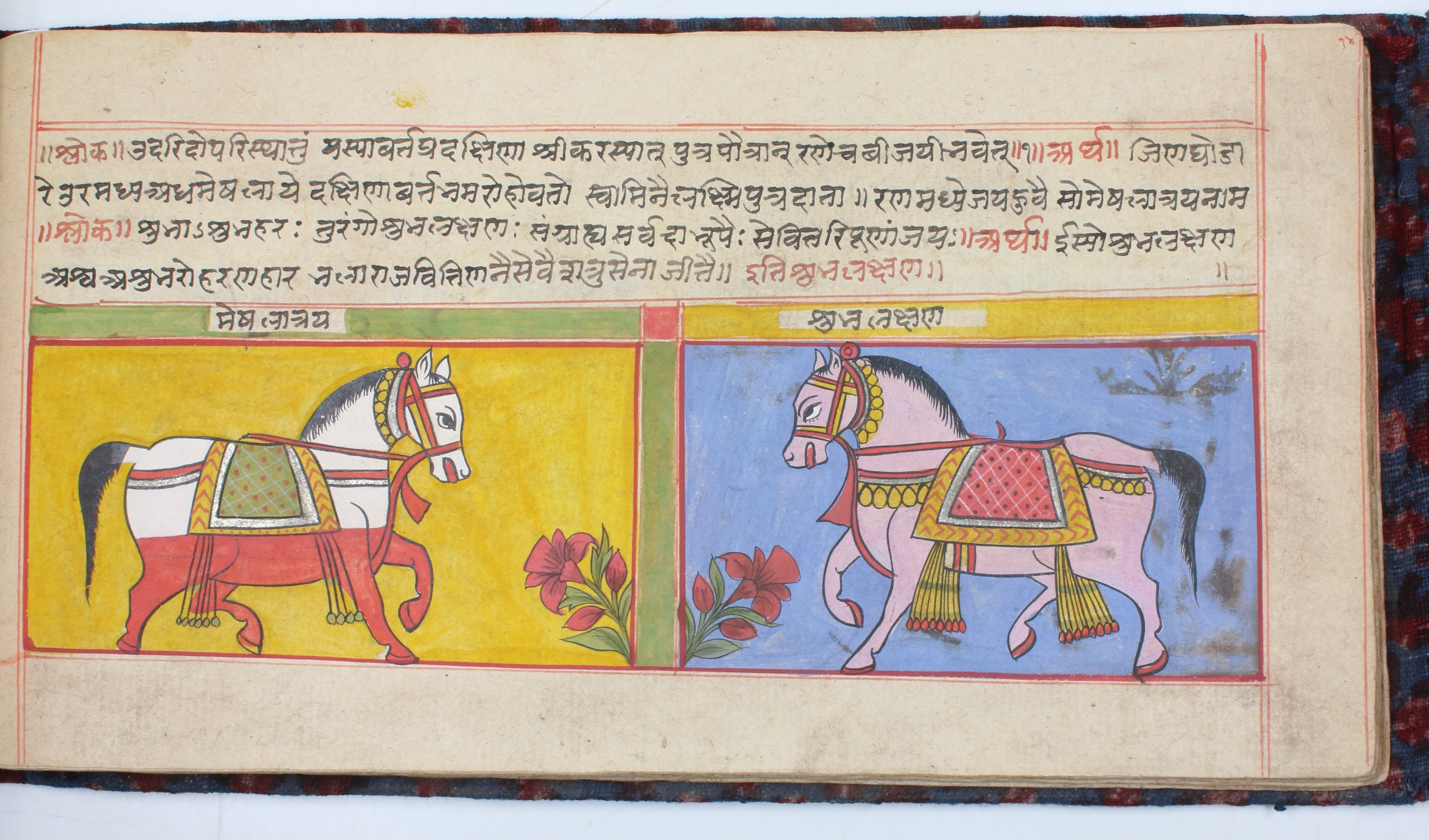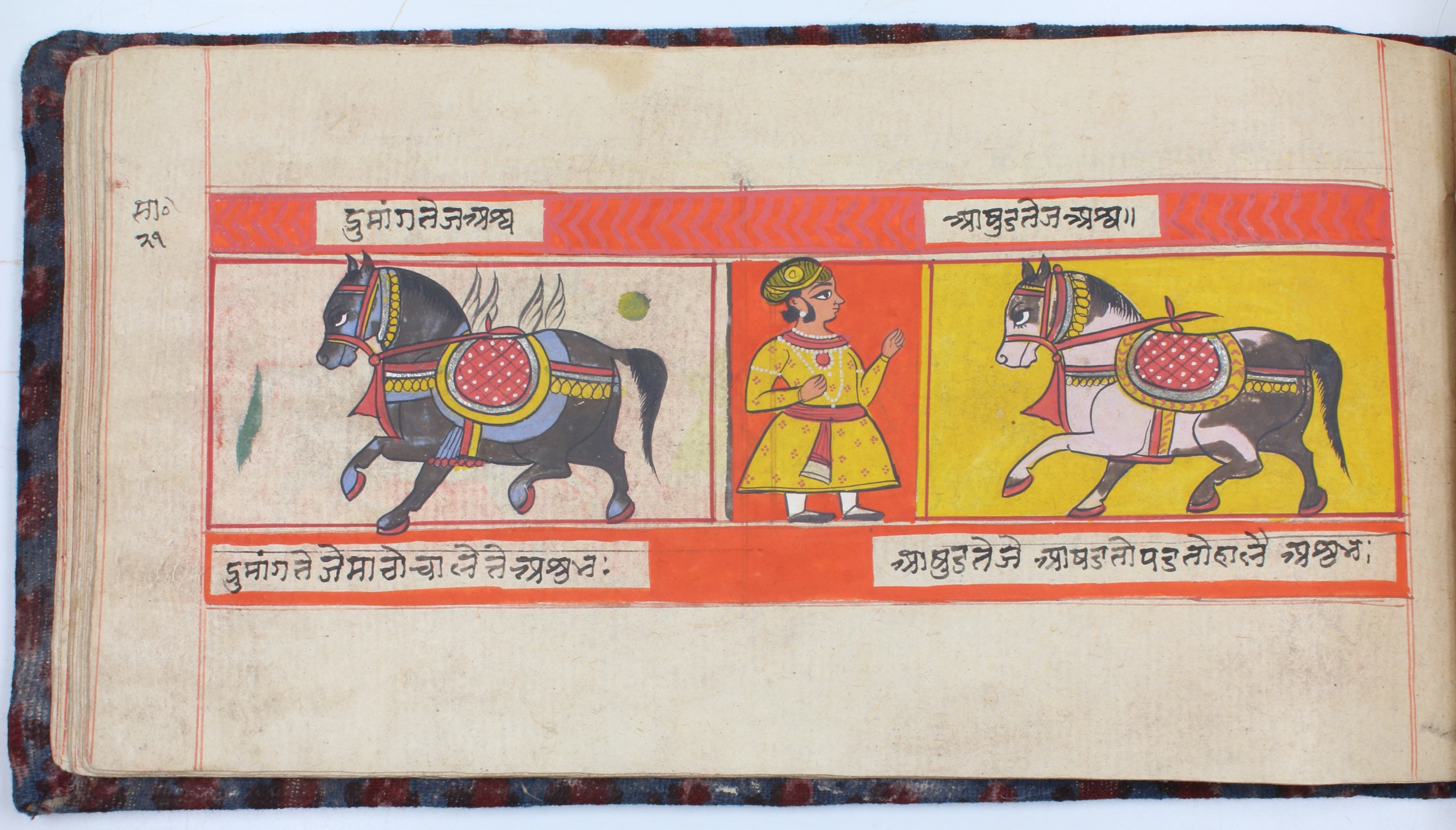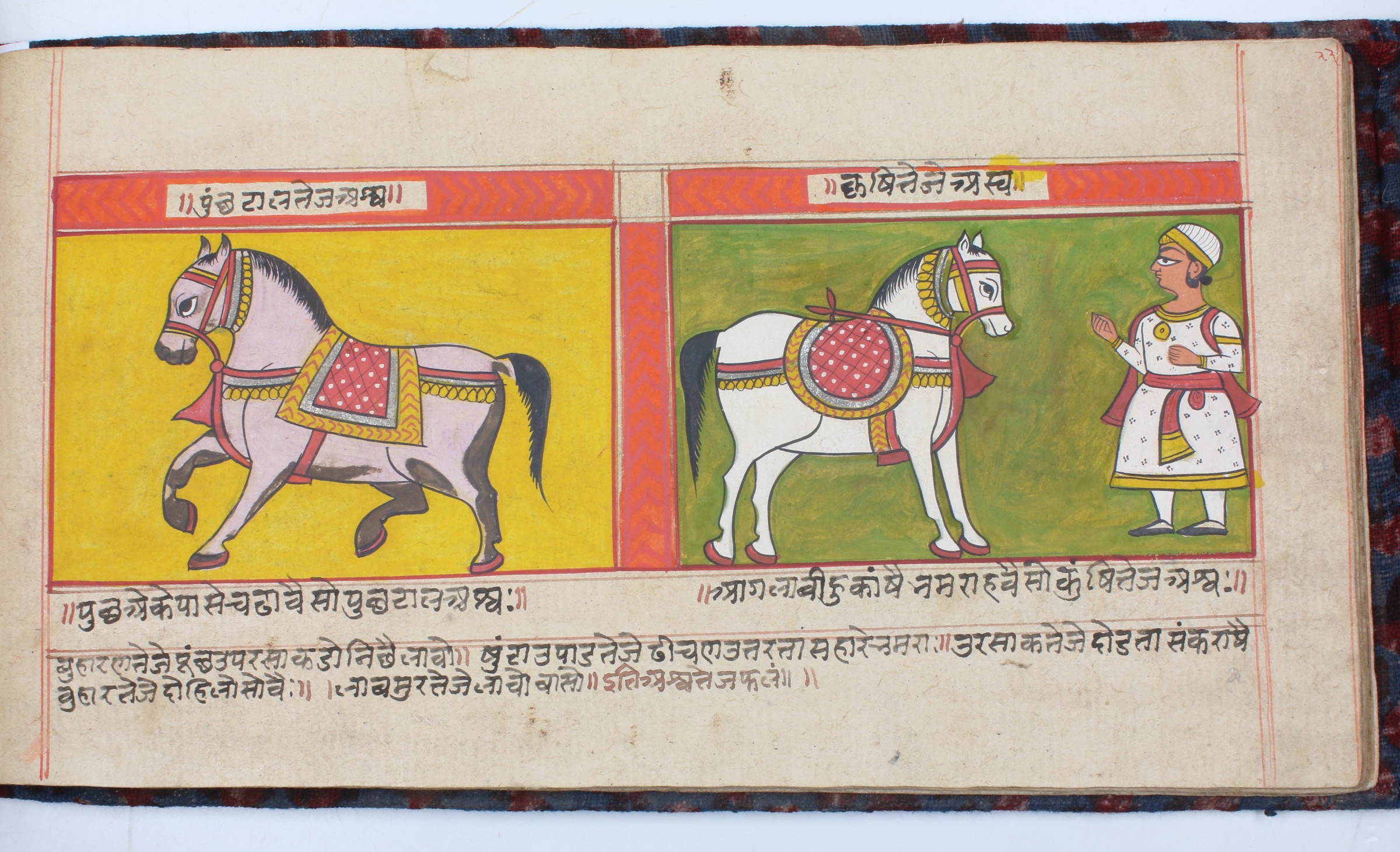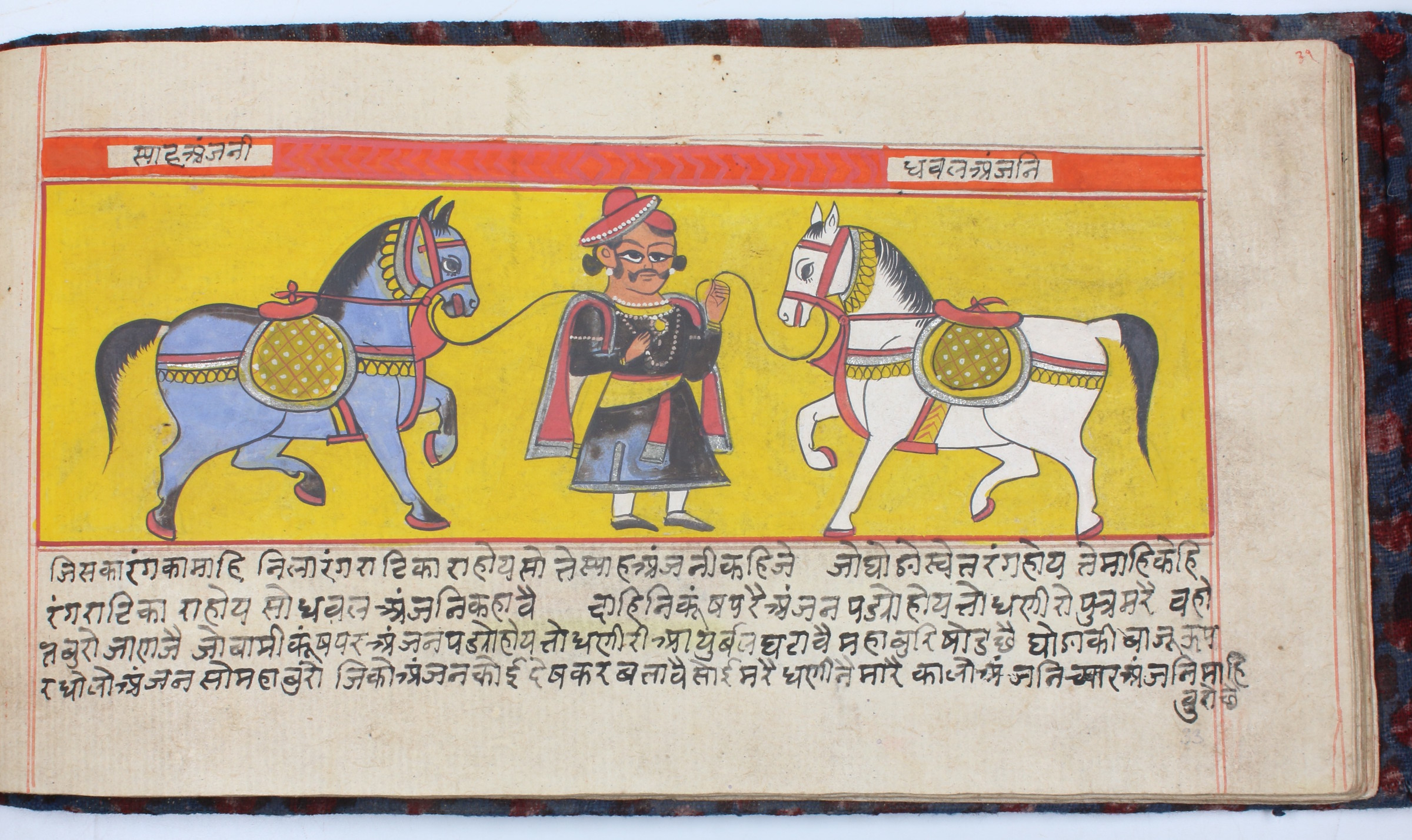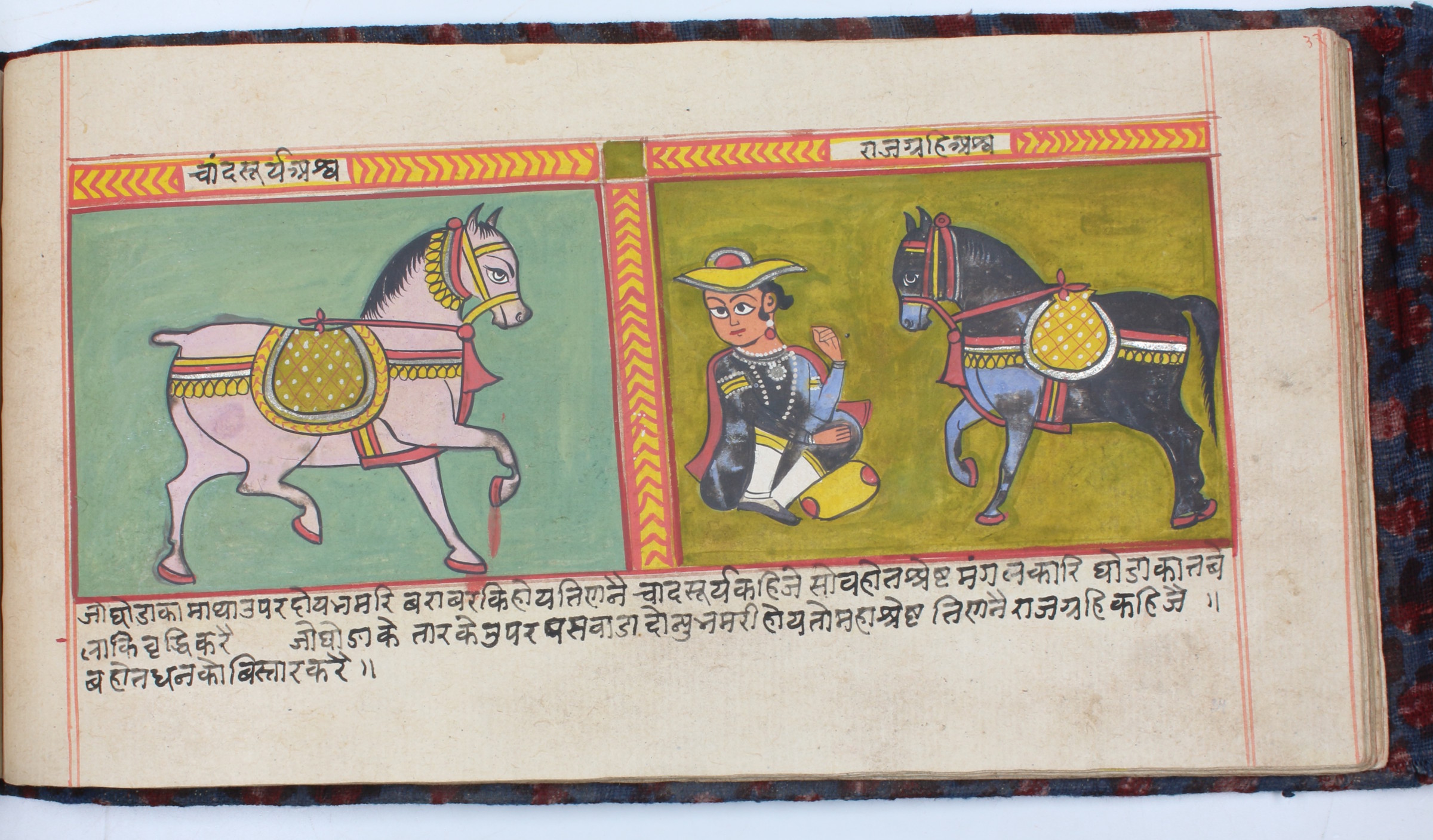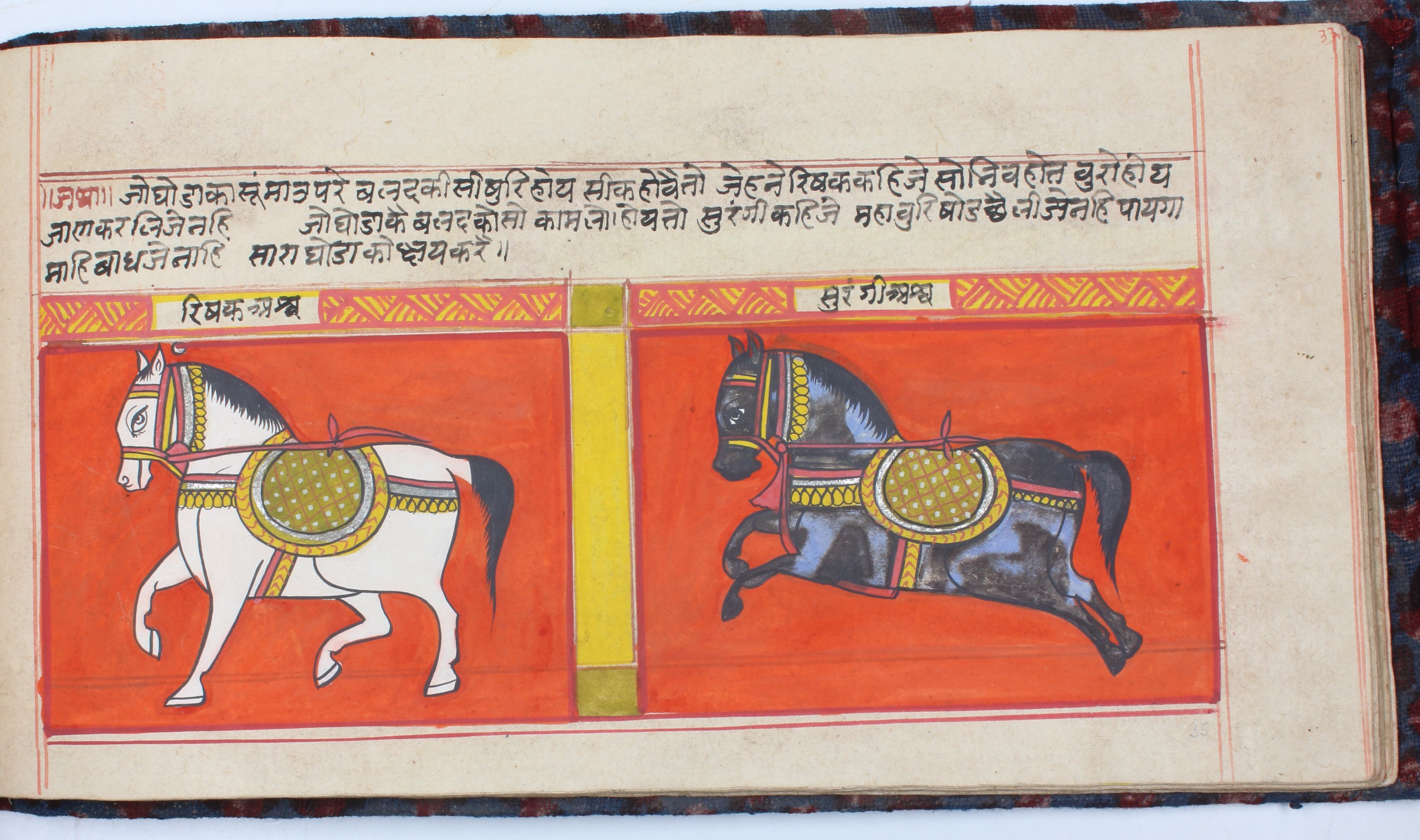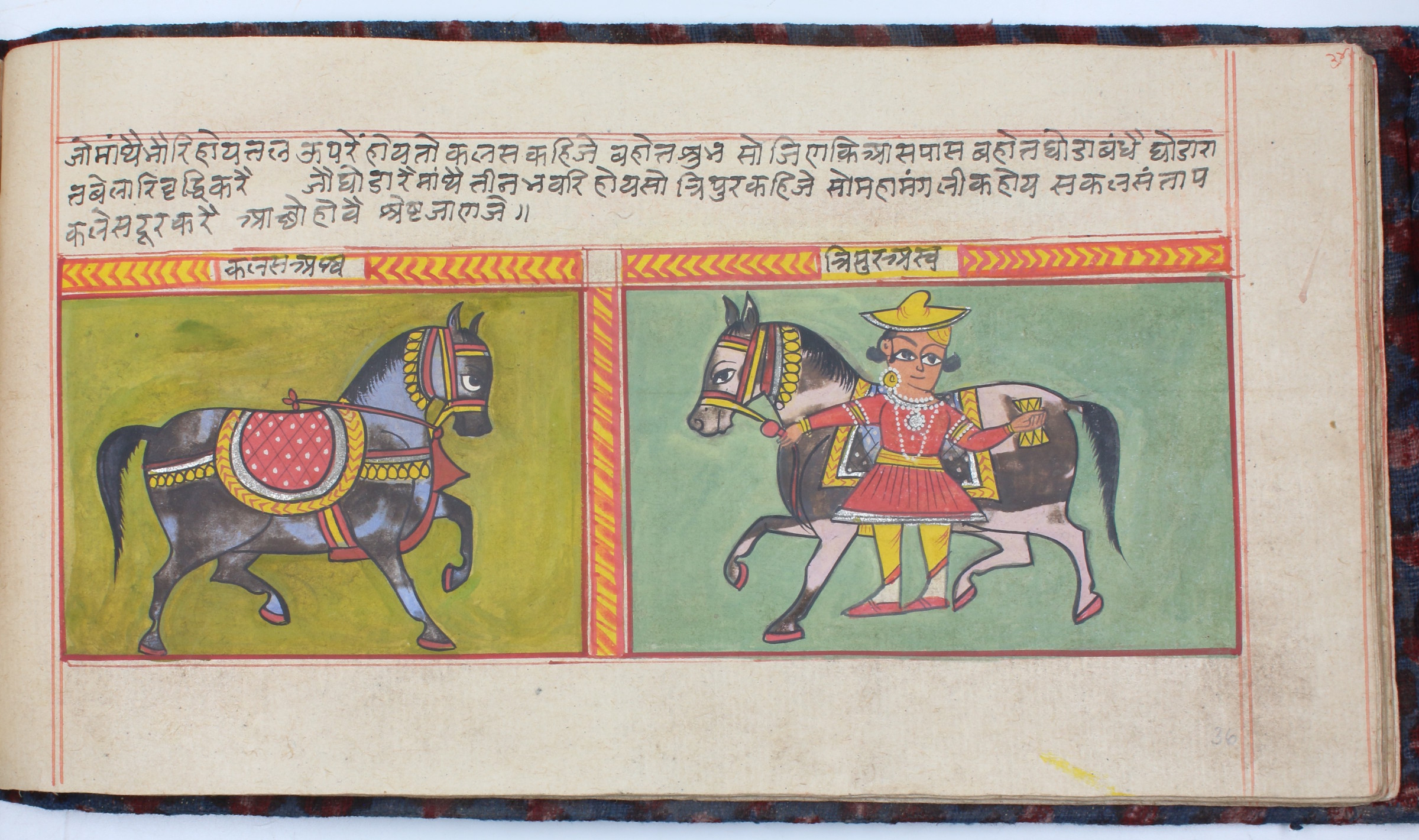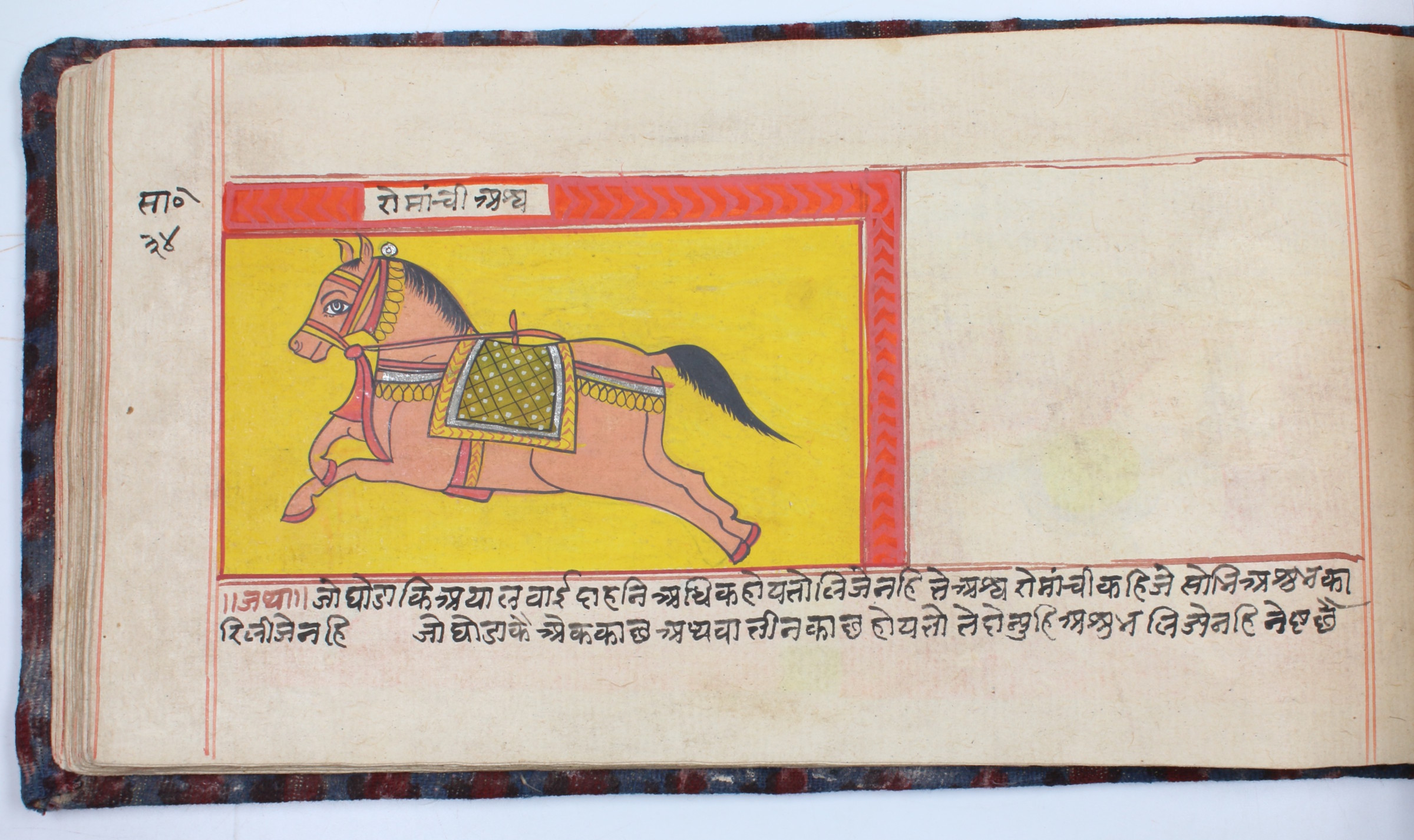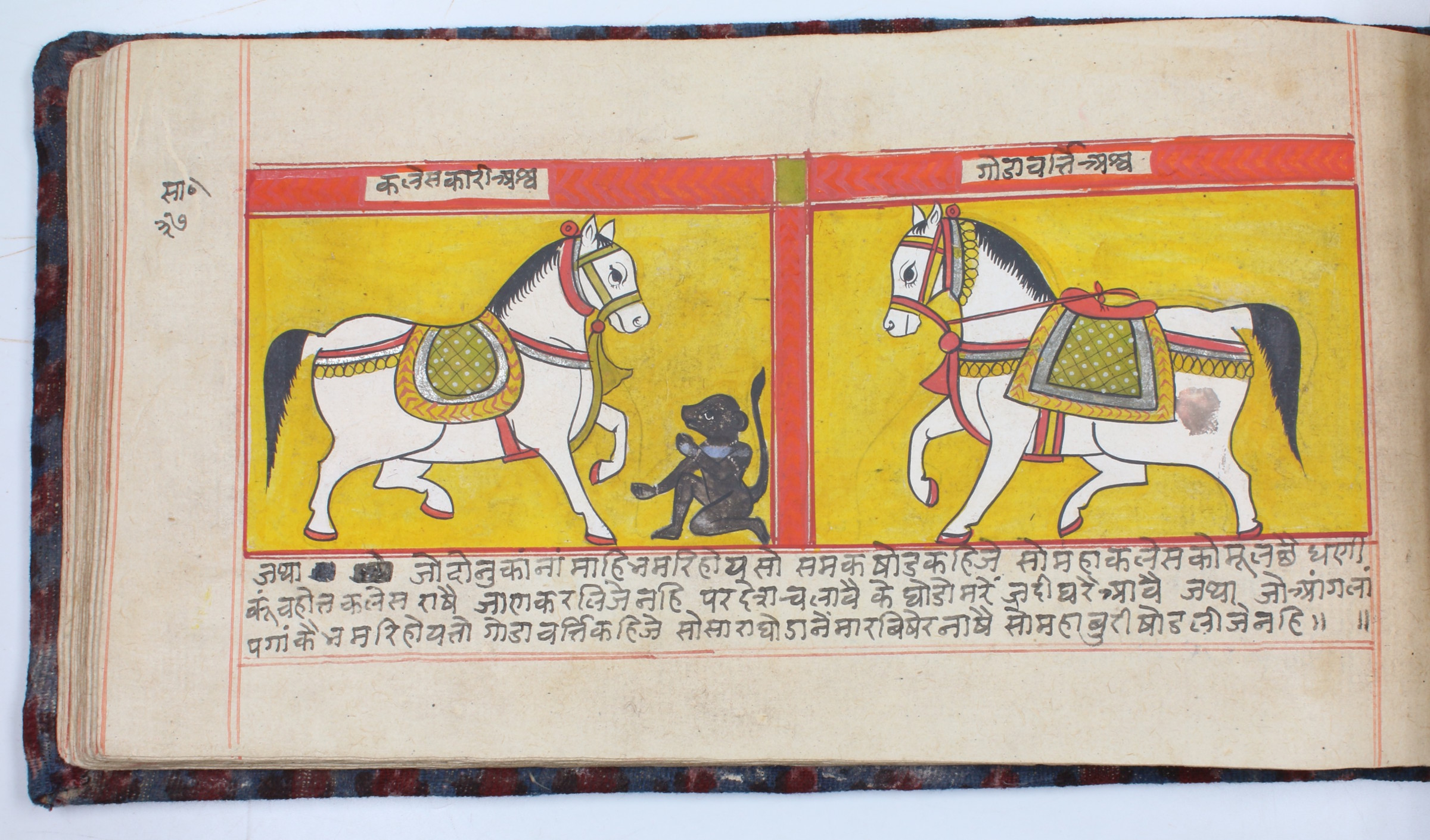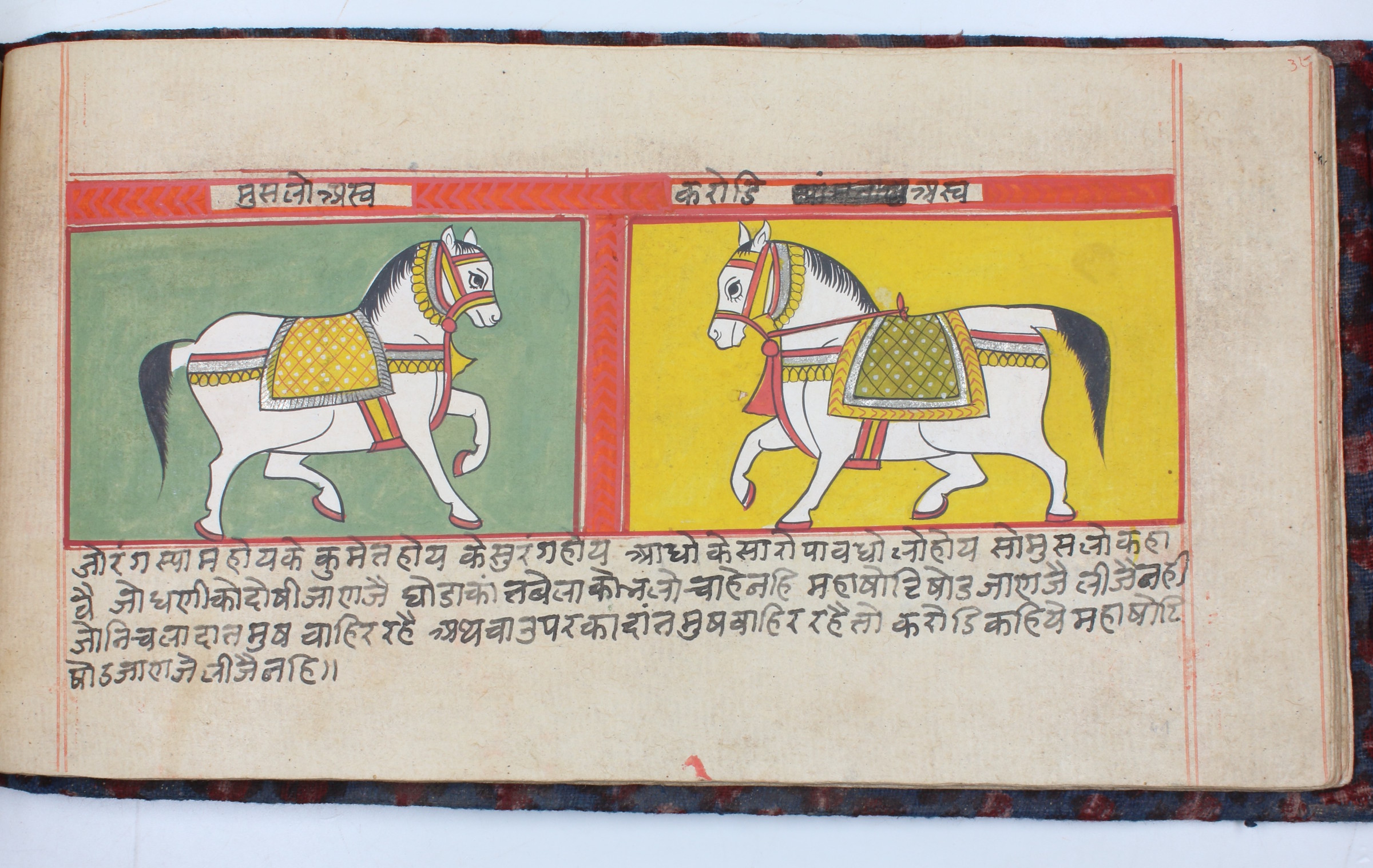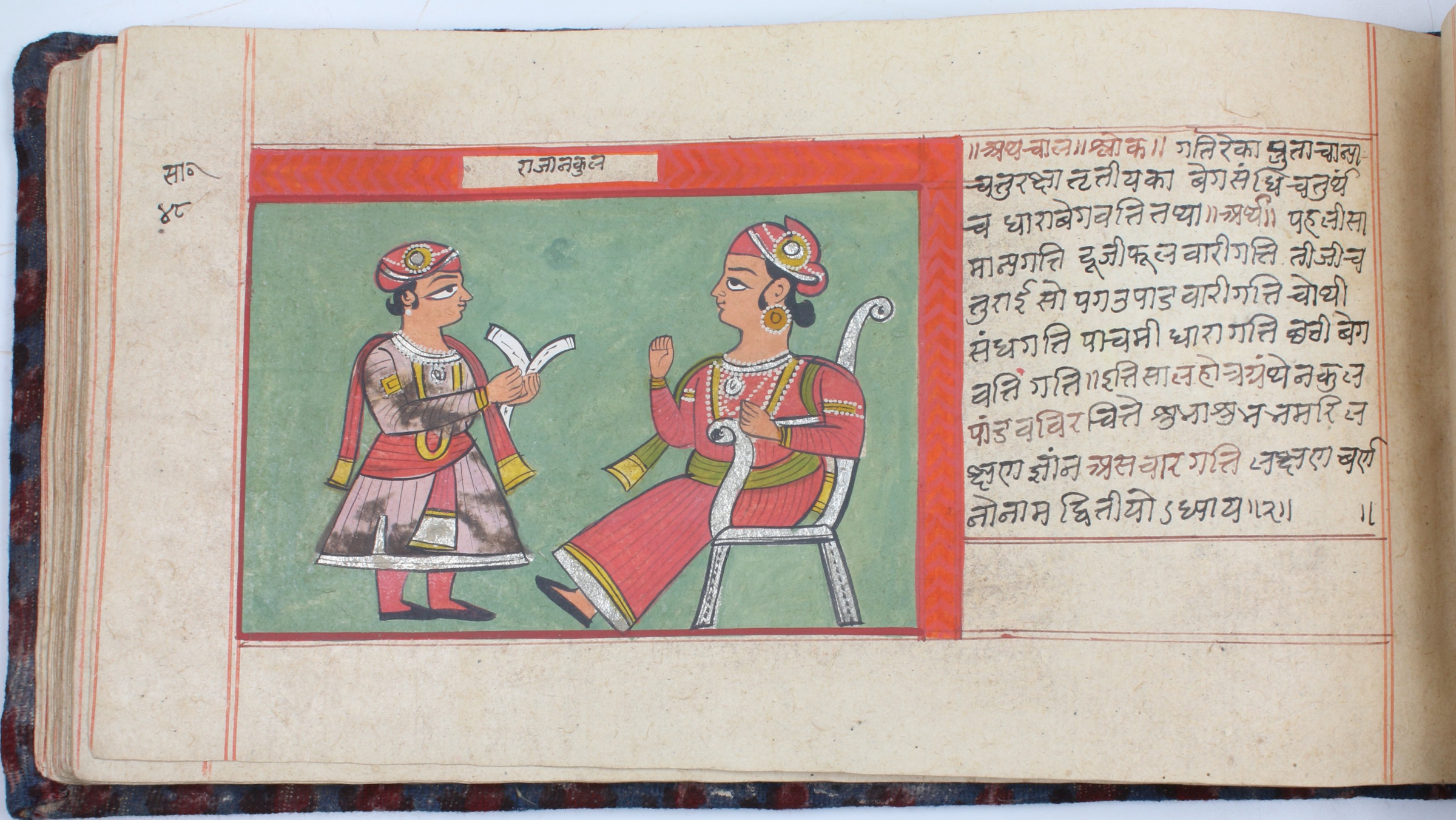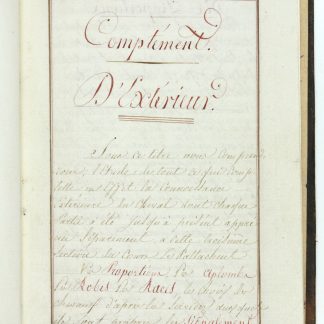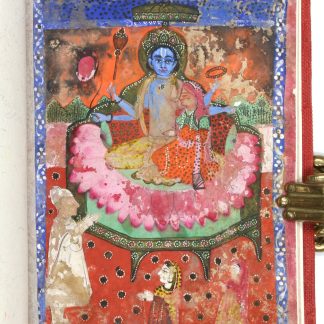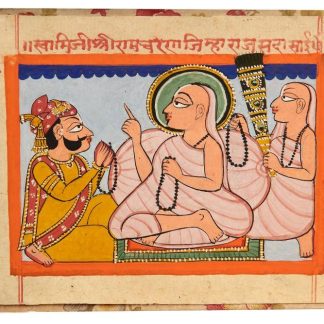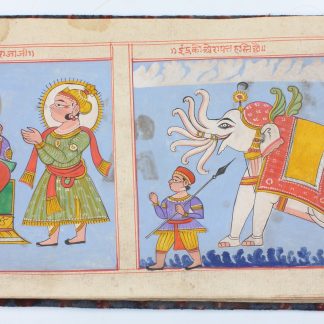Prolifically illustrated manuscript copy of the earliest work of Indian veterinary science
Shalihotra Samhita [Encyclopedia of the physician Shalihotra].
320 x 170 mm. 1 blank, 29 ff., 1 blank, 25 ff., 1 blank, 3 ff., 1 blank f. Hindi manuscript on paper, illustrated with 159 miniatures. Black script with important words and headings in red; borders illuminated in red, green, yellow, blue and purple, leaves ruled in red. Indian blue floral print cotton with flap and binding cord.
€ 45,000.00
Magnificently illustrated manuscript of the foundational text of veterinary science in India, with a particular focus on the care and management of horses. Beautifully and prolifically decorated, including a depiction of Lord Ganesh on a lotus with mice and two chauri-bearers, the Goddess Sarasvati on a bird with a chauri-bearer and a priest with an oil lamp, a king attended by a prince, the seven-trunked spotless white elephant Airavata with a keeper, the seven-headed horse Uchchaihshravas with a chariot and enthroned Shiva, a king seeking blessing from a priest, a priest seeking blessing from a king with a chauri-bearer, a king on a horse, and 144 miniatures of thoroughbred horses, each carefully individualized by colour, stature, length of snout, and other features.
Shalihotra was a 3rd century BCE expert on animal rearing and healthcare. The "Shalihotra Samhita" is his most famous work, and extensively documents the treatment of diseases using medicinal plants. This knowledge was so important that it was traditionally believed to have been revealed to Shalihotra by Lord Brahma himself.
The principal subject matter of the Shalihotra Samhita is the care and management of horses. It describes equine and elephant anatomy and physiology alongside a laundry-list of diseases and preventive measures. It also details equine body structures, elaborates on breeds, and contains notes on the auspicious signs to watch for when buying a horse. Though Shalihotra composed other treatises on the care of horses, the Samhita remains the earliest known work on veterinary science in India. Subsequent veterinary works were largely based on the Shalihotra Samhita, which future authors either revised or built upon.
The welfare of animals was always important on the ancient subcontinent, and it was considered the duty of veterinary doctors to prevent infections in animals which might spread to human society. Medicines were administered in the form of powders, decoctions, and ointments. Although herbal plants were the main ingredients in medicines, animal-derived substances and minerals were also used. Several treatments and medicines mentioned by Shalihotra are still used to date, such as for digestive disorders, sprains and sores in cattle, sheep, horses and other domesticated species.
In an appealing, finely preserved Indian cotton binding with fore-edge flap and wrap-around cord. Some professional restoration to interior hinges, but tightly sewn and in excellent condition overall. A beautifully presented manuscript and a key piece of the history of veterinary medicine.

